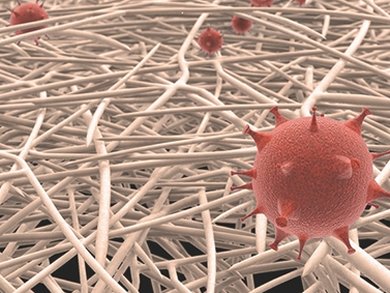The fear of the next great influenza pandemic is worrying as in the past millions of people died from its outbreaks. The problem is aggravated by the frequent mutations of this virus which undermine vaccination. One solution to minimize the risks of a pandemic are efficient and affordable virus removal filters to reduce the risk of infection at places with high human turnover.
Albert Mihranyan, Uppsala University, Sweden, and colleagues investigated the filtering properties of filter papers made of nanocellulose, which is produced by filamentous green algae, e.g., Cladophora algae. They feature a pore size distribution between 2 and 200 nm.
The retention is first characterized by fluorescent labeled latex-particles of 500 to 30 nm in diameter. Analysis of the filtrate showed no fluorescence proofing that the nanocellulose is not permeable for particles bigger than 30 nm. The virus retention properties are tested with the swine influenza virus (SIV), a model virus strain with a particle size of 80 to 120 nm. Following the virus retention test, no infectious SIV particles could be found in the filtrate.
This shows that cellulose nanofibers are particularly suitable for for virus removal.
- A Size-Exclusion Nanocellulose Filter Paper for Virus Removal,
Giorgi Metreveli, Linus Wågberg, Eva Emmoth, Sándor Belák, Maria Strømme, Albert Mihranyan,
Adv. Healthc. Mat. 2014.
DOI: 10.1002/adhm.201300641




